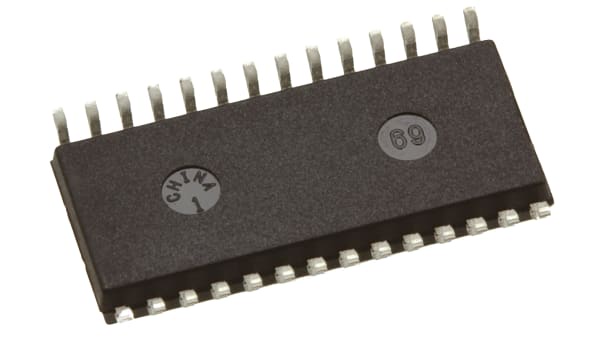General Description
The CS8416 is a digital audio receiver with up to 192 kHz sampling rates. It allows S/PDIF and AES/EBU audio data to be exchanged between consumers and professional audio equipment. Up to eight channels of digital audio input data can be processed by an 8:2 input multiplexer. For increased system flexibility, the input multiplexer's second output can be used as a S/PDIF pass-through.
It contains a clock-recovery system with exceptionally minimal jitter that produces a very clean recovered clock from the incoming audio stream. The gadget additionally has three general-purpose output pins with customizable signal routing. The CS8416 is an industry-leading 192 kHz digital audio receiver with an extraordinarily low jitter performance of 200 ps.
CS8416 Series Features & Benefits
• Totally compatible with EIAJ CP1201, AES3, IEC-60958, and S/PDIF receiver
• +3.3 V analog (VA) and digital (VD) supply
• CD Q Sub-Code decoding ability
• Sample frequency ranges from 32 kHz to 192 kHz
• Supports SPI or I2C interface in stand-alone hardware mode
• Compressed audio input streams auto-detection
CS8416-CSZ Pin Configuration (for pin function info, refer to datasheets)

CS8416-CSZ Footprints

CS8416-CSZ 3D Model

CS8416-CSZ Dimension

CS8416-CSZ Block Diagram

Instructions
Where to Use CS8416 Series
A/V receivers, CD-R, DVD receivers, multimedia speakers, digital mixing consoles, effects processors, set-top boxes, and computer and vehicle audio systems are among the target applications.

(2 VRMS Subwoofer Line Out)
How to Use CS8416
To show the influence of each receiver's output jitter, the CS4398 high-performance DAC was used to collect audio performance data. Each test was run on a single CDB4398 customer evaluation board. To achieve a smooth low-frequency THD+N response, the CDB4398's CS4398 FILT+ capacitor was raised from 100 F to 1000 F. For all measurements provided by the CS8416, a CDB8416 customer evaluation board was utilized to run the CS4398 on the CDB4398. For further information on each evaluation board, see the CDB4398 and CDB8416 datasheets.

User Guidelines - Improvements From CS8413/14 to CS8416
Aside from the differences indicated in the chart, there are a few more distinctions between the CS8413/14 and the CS8416 that a designer contemplating making the switch should be aware of. A summary of some of the most noteworthy distinctions is presented below for your convenience. Please refer to the datasheet for each item for further information.

The CS8416 and the CS8413/14 do not pin compatible.
The receiver input pins on the CS8416 are not RS-422 compatible; the absolute maximum voltage range for the receiver input is 12 V for the CS8413/14 and -0.3 V to VL + 0.3 V for the CS8416.
The VA and VD supply voltages for the CS8413/14 are 5 V and 3.3 V, respectively.
The CS8416 and CS8413/14 have differing external PLL filter component values.
When the PLL is unlocked, the recovered clock frequency for the CS8413/14 is around 3 MHz, and for the CS8416, it is approximately 375 kHz or 750 kHz, depending on the set RMCK ratio.
During reset, the CS8416 recovered clock output pin is not active. The C and U data framing implementations on the devices differ in a number of ways. The devices display their input sample rate in a variety of ways.
In the hardware mode of the CS8416, some pins devoted to reporting the C data bits on the CS8414 are not available.
In software mode, the CS8413 is not register-compatible with the CS8416.
In the CS8416's software mode, the first five bytes of both channels' C data register is accessible, but the CS8413 permits sequential 1-byte access to all 24-bits of a single channel's C data.
Click the link to check more details.
https://www.easybom.com/blog/a/192-khz-digital-audio-receiver-cs8416csz-introduction


No comments yet